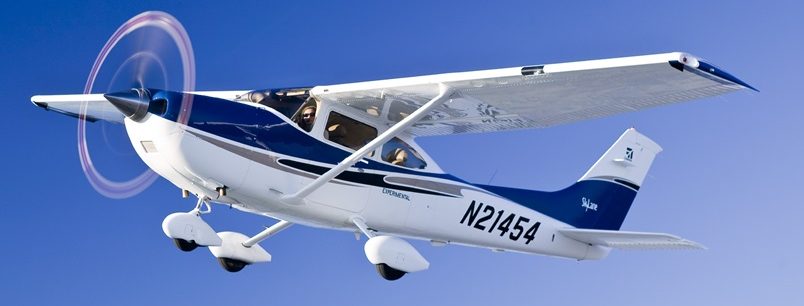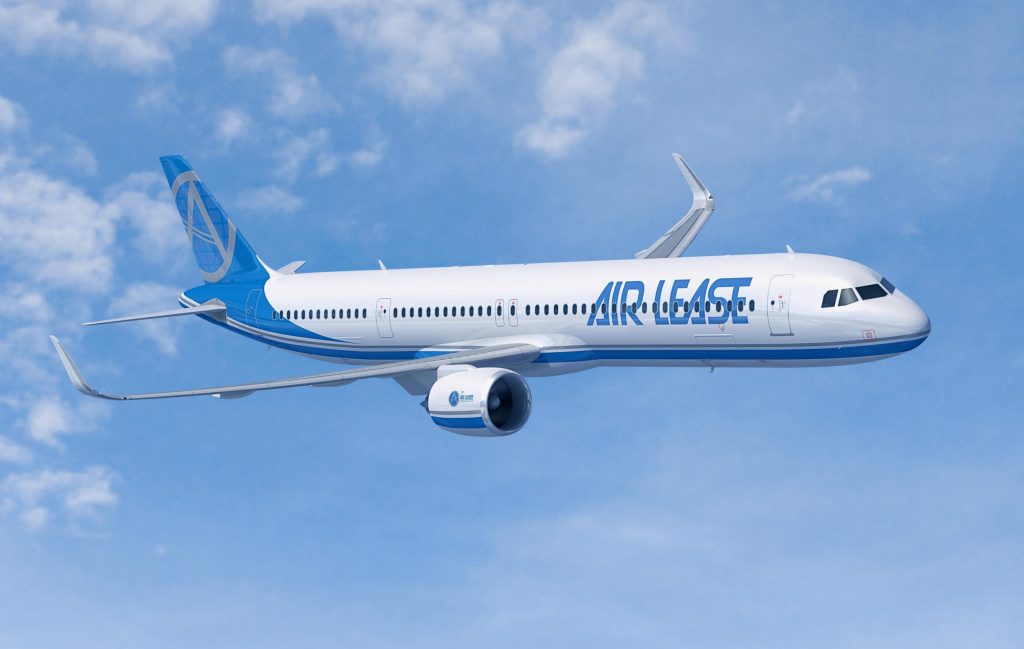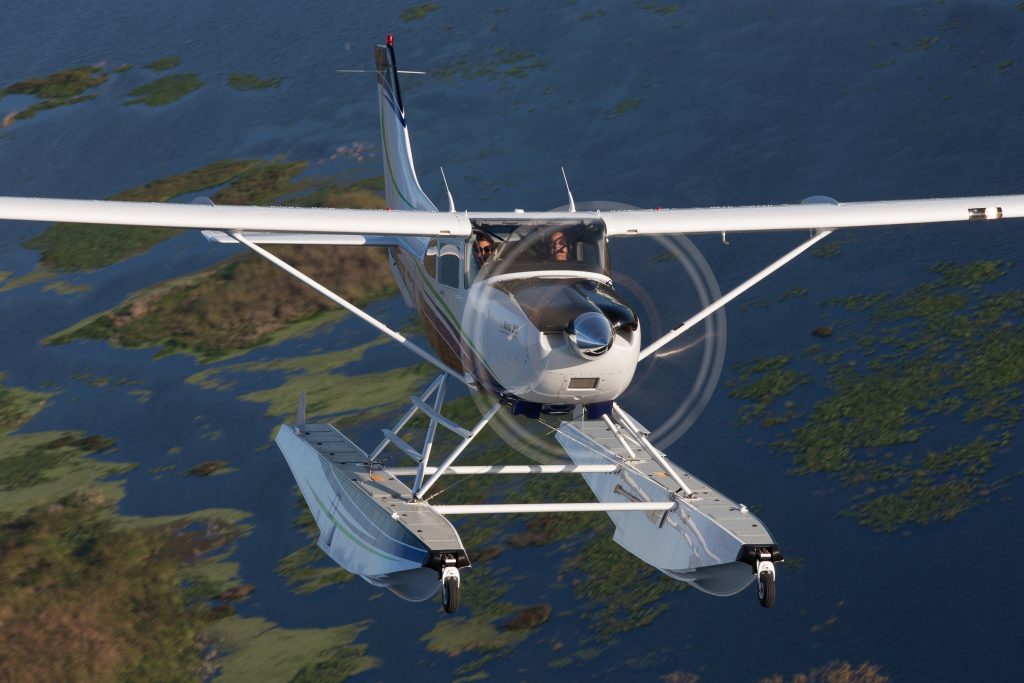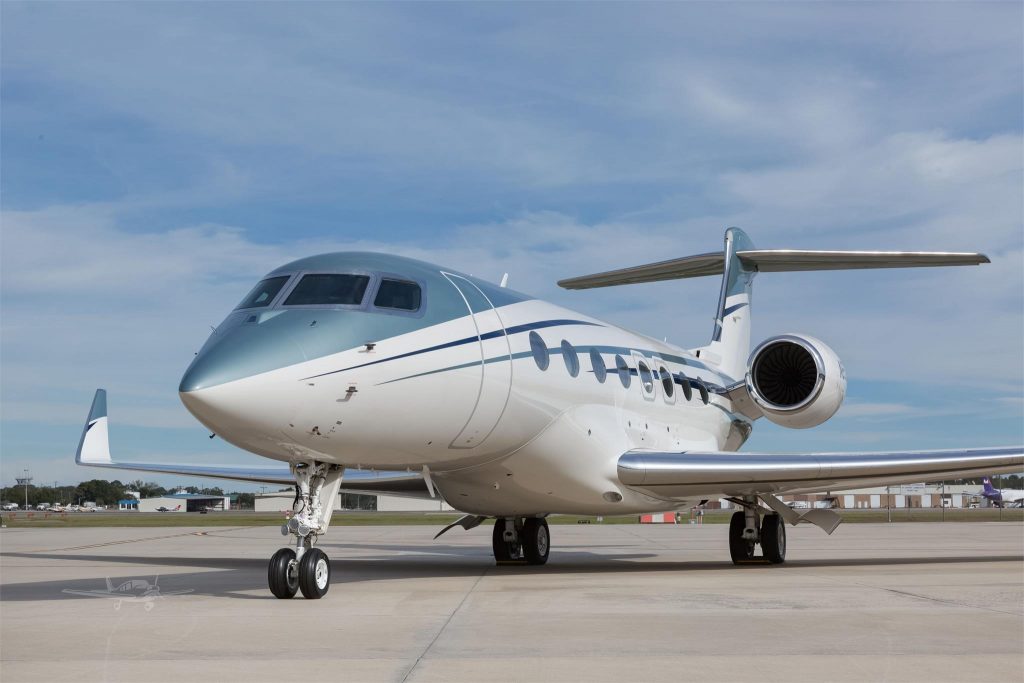Exploring Airbus A321neo’s Impact: Uncovering the Game-Changing Features and their Influence on Aviation
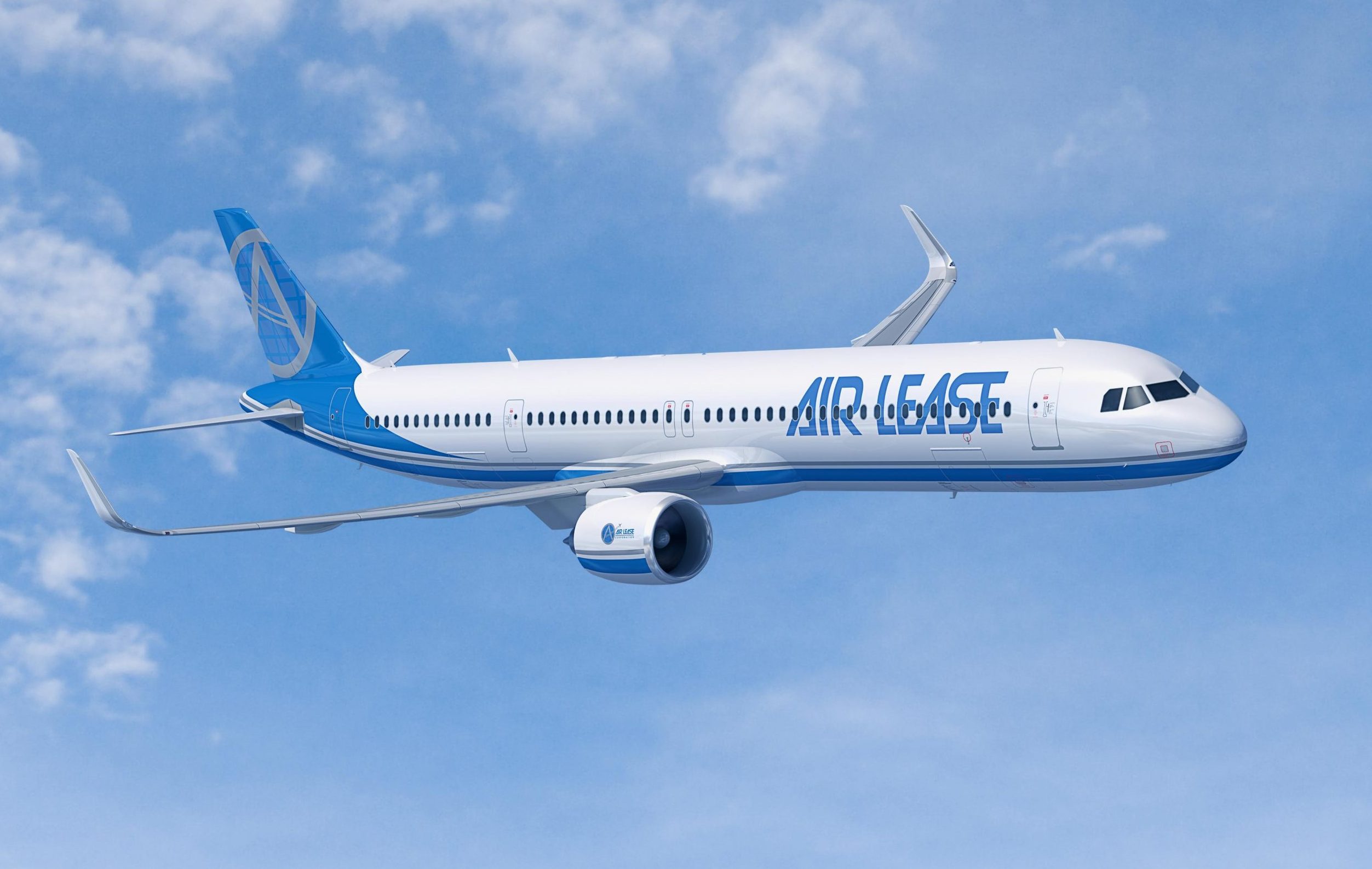
Welcome aboard as we embark on a thrilling journey through the awe-inspiring world of the Airbus A321neo. This revolutionary aircraft has been dominating the skies and the aviation market for its unmatched efficiency, mind-blowing technology, and passenger comfort. Renowned as a game-changer, this aircraft continues to shape the future of air travel. This article depicts the breathtaking tales that have crowned the Airbus A321neo as the darling of the industry. From its humble beginnings through its record-breaking efficiency and into its growing popularity among airlines worldwide, we’ll give you an insider’s look at why the Airbus A321neo is truly a beacon of innovation in the aviation realm. So fasten your seatbelts and prepare for take-off as we explore the 10 mind-blowing stories involving the Airbus A321neo at AircraftMarket.co.uk. Buckle up, it’s going to be an exciting journey!
The Birth of the A321neo
The Airbus A321neo, a revolutionary addition to the aviation world, had a development journey worth recounting. In this section, we delve deeper into the creation process and significant breakthroughs that shape this magnificent aircraft.
Development Process
The development journey of the Airbus A321neo started back in December 2010 when Airbus announced a new generation of the A320 family. Aimed to provide exceptional performance, the project was meticulous and tailored by engineers and aviation experts who embedded their vast knowledge and expertise in this state-of-the-art aircraft. The entire development process was based on three pillars: innovation, technology, and sustainability. Innovative and industry-leading practices were harnessed meticulously, acquiring a competitive advantage over other aircraft in the same category.
Key Innovations
Several groundbreaking innovations mark the Airbus A321neo. One of the most significant improvements was the introduction of “New Engine Option” (NEO), which justifies the ‘neo’ in A321neo. Armed with either CFM International’s LEAP-1A or Pratt & Whitney’s PurePower PW1100G-JM engines, these options provide a step change in terms of fuel efficiency, dramatically reducing fuel burn and emissions.
Another pioneering advancement is its ‘Sharklet’ wing tips. Inspired by the biomimicry of bird wings, these 2.4-meter tall wing-tip devices provide a significant reduction in fuel burn by reducing aerodynamic drag.
Furthermore, the Airbus A321neo also boasts an impressive Airspace cabin, offering enhanced passenger experience, larger overhead storage compartments, spacious lavatories, and harmonious LED cabin lighting, among other advancements.
This remarkable genius work of engineering and design didn’t happen overnight. The birth of the Airbus A321neo was a culmination of years of meticulous development and key innovations that redefined the boundaries of single-aisle air travel.
Record-Breaking Fuel Efficiency
The Airbus A321neo, with its record-breaking fuel efficiency, is revolutionising the aviation industry. This remarkable plane has fundamentally changed how airlines consider fuel costs, proving that economic and environmental sustainability can go hand in hand.
Comparison with Previous Models
Previous models of the Airbus family, such as the A320, while impressive in their own right, pale in comparison to the fuel efficiency offered by the Airbus A321neo. Owing to the inclusion of new generation engines, Sharklet wing-tip devices, and a host of aerodynamic improvements, the A321neo offers up to 20% savings in fuel burn per seat over its predecessors. This translates to noticeable savings over time, particularly for airlines operating long-haul routes.
Also worth noting is the significant increase in fuel efficiency over the Boeing 737, one of the A321neo’s primary competitors. Despite both aircraft types being broadly similar in size and range, the A321neo burns around 15% less fuel per flight, a figure that rapidly adds up for airline operations, where even the smallest margins matter.
Impact on Airline Operations
The implications of these cost savings for airline operations are substantial. Airlines are always in search of ways to reduce operational costs, and fuel—one of the most significant recurring costs an airline must manage—often offers limited flexibility. The Airbus A321neo’s fuel efficiency translates into material savings, allowing airlines to allocate resources more effectively across their enterprises.
Moreover, with consumers becoming more environmentally conscious, airlines operating such fuel-efficient aircraft can market themselves as ‘green options,’ attracting customers aware of and concerned about the aviation industry’s environmental impact. Further, this fuel efficiency also allows the aircraft to fly longer routes without needing to refuel, leading to greater flexibility and operational efficiency for airlines.
In effect, the Airbus A321neo’s record-breaking fuel efficiency has wide-ranging impacts, shifting the economic and environmental paradigm in which airlines operate. This means airlines can achieve critical sustainability goals while maintaining their profitability and enhancing operational efficiency. Given these remarkable advantages, it’s no wonder that the Airbus A321neo is quickly becoming a favourite among airlines worldwide.
Unprecedented Range Capabilities
With every new variant, Airbus aims to push the limits of what’s possible in aviation. The Airbus A321neo is no exception, offering unprecedented range capabilities that allow airlines to undertake longer routes with greater efficiency.
A321LR and A321XLR Variants
The Airbus A321LR and A321XLR versions symbolise the company’s commitment to continuous innovation. Both models feature the most modern technology, superior performance, and exceptional passenger comfort.
The A321LR (Long Range) variant boasts a range of up to 4,000 nautical miles. This model takes full advantage of the neo (new engine option), which provides substantial fuel savings. As a result, the A321LR can offer non-stop services on longer routes previously unmanageable by single-aisle aircraft.
Giving flexibility a new meaning, the A321XLR (Extra Long Range) variant represents a game-changer in the industry. With a staggering range of 4,700 nautical miles, it’s the world’s longest-range single-aisle aircraft. This extended reach allows airlines to operate low-cost, point-to-point services and opens up a wealth of opportunities for network expansion.
New Route Possibilities
The remarkable range of the Airbus A321neo, especially its LR and XLR variants, has unlocked new possibilities for airlines. Routes once considered uneconomical with larger, twin-aisle aircrafts are now viable, bridging the gap between single-aisle and wide-body planes.
The extended range liberates airlines from traditional hub-and-spoke models, allowing them to offer direct flights between smaller cities. This can tap into underserved markets, create new revenue streams, and provide more convenient travel options for passengers.
The emergence of the A321neo and its variants has fundamentally changed the competitive dynamics in the airline industry. Airlines can redefine their strategies, enhance connectivity, and provide superior services, thanks to the unprecedented range capabilities of the Airbus A321neo.
Passenger Comfort Redefined
When it comes to revolutionizing air travel, the Airbus A321neo has made significant strides not just in efficiency and sustainability, but also when it comes to the comfort of its passengers. Let’s dive into how this remarkable aircraft has redefined passenger comfort with its cabin design innovations and how the passengers themselves feel about their experiences on the A321neo.
Cabin Design Innovations
The Airbus A321neo prioritizes passenger comfort with its avant-garde cabin design innovations. The aircraft introduces the new ‘Airspace by Airbus’ cabin, offering passengers a more spacious interior, larger overhead storage bins, and a much quieter environment.
The Airspace cabin’s skilful design includes ambient lighting options, creating a soothing atmosphere, and increased legroom permits passengers to stretch out and enjoy their flight. The layout of the aircraft successfully occupies less space for machinery and more room for passenger amenities, making long-haul flights a much more comfortable experience.
With its bigger, 40% more spacious overhead compartments, passengers can store their carry-on luggage efficiently. By easing these common travel nuisances, the Airbus A321neo enhances the overall passenger journey – from boarding to landing.
Passenger Feedback and Experiences
The ultimate testament to the A321neo’s success in redefining passenger comfort comes directly from passenger feedback and experiences. Passengers appreciate the larger lavatories equipped with antibacterial surfaces, the inclusion of the latest inflight entertainment technologies, and Wi-Fi connectivity throughout the aircraft.
Most notably, passengers have praised the aircraft’s significantly quieter cabin. Thanks to the state-of-the-art engine technology and superior insulation, the A321neo reduces cabin noise, giving passengers a more peaceful and tranquil flying experience. The adjusted ambient lighting also receives a thumbs-up from frequent fliers, enhancing their travel experience by aligning with various phases of the flight, from a warm welcome to the calming, night-time blue for restful sleep.
In conclusion, the Airbus A321neo has made its mark in the aviation industry not by redefining just the standards of fuel efficiency and eco-friendliness, but by successfully remodeling passenger comfort and setting a new benchmark for future aircrafts. By keeping the passenger experience at the forefront of its design and function, the A321neo is indeed soaring high.
Airlines’ Love Affair with the A321neo
Air travel is continually evolving, and airlines worldwide are always in the quest for the next best thing. Among the most coveted models in the industry today is the Airbus A321neo, an aircraft that has stolen the heart of many carriers.
Record-Breaking Orders
Since Airbus A321neo hit the market, it has been a favourite for airlines, with record-breaking orders seen year after year. The unprecedented demand for this model is attributed to its top-tier performance, cost-efficiency, and eco-friendliness. The appeal was instantaneous, and orders started pouring in from all corners of the world.
Airlines such as American Air, AirAsia, and JetBlue are among the many that have placed substantial orders for the A321neo, demonstrating their confidence in this aircraft. These substantial orders resulted in it quickly becoming the fastest selling Airbus jet. It’s clear that the love affair between the A321neo and the industry is indeed serious, with this plane becoming a cornerstone of many fleet strategies.
Success Stories from Major Carriers
Many major carriers have already integrated the Airbus A321neo into their fleet and are reaping the benefits. American Air, for example, has praised the eco-friendly nature and enhanced fuel efficiency of the A321neo, features that align with their sustainability goals.
Asia’s largest budget carrier, AirAsia, has also found success with the A321neo, with its superior range and efficiency enabling them to gain a competitive advantage in the region. The A321neo has helped them expand their network and boost their market presence markedly.
JetBlue, too, sings praises of the A321neo’s unrivalled passenger comfort and cabin design, which significantly enhances their customer experience. By incorporating the A321neo into their fleet, JetBlue has maintained its promise of delivering an unparalleled inflight experience.
In essence, the A321neo has proven itself as a game-changer in commercial aviation, and it does not come as a surprise that airlines are head over heels for it. Its impact on the industry’s future continues to be significant, and its success among carriers supports the claim of being the leader in single-aisle aircraft technology.
Stay tuned to AircraftMarket.co.uk as we explore more about the advancements, unexpected roles, and future prospects of the A321neo, facts that continue to fascinate and amaze us all.
Environmental Impact
The Airbus A321neo is not just an exceptional aircraft in terms of comfort and operational efficiency, it also excels in its contribution to environmental sustainability. This aircraft is setting new standards in the aviation industry by significantly reducing carbon dioxide emissions and minimizing noise pollution.
Reduced Emissions
The Airbus A321neo has introduced innovations to its engine design that prioritizes the reduction of greenhouse gas emissions. With state-of-the-art engine technology called the “neo” (new engine option), which includes either the Pratt & Whitney PW1000G or CFM International LEAP-1A engines, this aircraft has lowered CO2 emissions by up to 15%. That means for every 1 million flights, the A321neo could potentially save around 1.5 million tons of CO2 emissions compared to its predecessor. This is equivalent to planting about 60 million trees. The A321neo’s reduced carbon footprint is a significant step towards sustainable aviation and contributes to the aviation industry’s goal of halving CO2 emissions by 2050.
Noise Reduction Achievements
Environmental responsibility of an aircraft extends beyond just emissions, it also includes minimizing noise pollution. The Airbus A321neo is designed with advanced technologies that lower noise levels both on the ground and in flight. The new engine option, along with aerodynamic improvements like Sharklets on the wingtips, contribute to quieter takeoffs and landings. In fact, the A321neo’s noise footprint is approximately 50% smaller than previous models, rendering this aircraft a welcomed presence in airports located close to urban areas.
The Airbus A321neo’s concerted efforts to reduce both emissions and noise pollution highlight that environmental sustainability is an integral part of its design philosophy. This places the A321neo as a leader in promoting a greener future while also offering unmatched passenger comfort and operational efficiency.
Technological Marvels
In the highly competitive aircraft industry, technology serves as a game-changer. The introduction of the Airbus A321neo into aviation showcases significant technological advancements, setting the aircraft apart in the single-aisle market. Two of the most standout marvels in this aircraft are the Advanced Avionics and the Engine Innovations.
Advanced Avionics
The Airbus A321neo boasts an impressive suite of advanced avionics. Airbus’ continuous commitment to enhance the avionics technology has resulted in an aircraft with unprecedented flight capabilities. The enhanced flight control systems, complete with modern computers, provide superior navigation and surveillance, ensuring an efficient and safer flight.
Automated systems such as Flight Management Systems (FMS) are incorporated into Airbus’ advanced avionics, managing the aircraft’s route, speed, and altitude. With exceptional digital communications between the aircraft and air traffic control, the node-based flight path system ensures optimal use of airspace.
Engine Innovations
On the engine front, the Airbus A321neo is a true innovator. It’s powered by either the CFM International LEAP-1A or the Pratt and Whitney PW1100G-JM, both offering remarkable improvements over previous engines.
These engines are not just about power but about efficiency as well. With a high bypass ratio (the amount of air that bypasses the core of the engine versus the amount that goes through it), the engines are quieter and more efficient. This increased fuel efficiency leads to significant fuel savings, consequently reducing carbon emissions.
The exceptional performance of these engines has led to the A321neo’s long-range capabilities, enabling airlines to open up new routes and expand their networks. This integration of advanced avionics and innovative engines has enhanced the Airbus A321neo’s overall dependability, solidifying its status as one of the most efficient single-aisle aircrafts in aviation today.
The A321neo in Unexpected Roles
Beyond its advancements in technology and passenger comfort, Airbus A321neo also shines in less conventional roles. Despite primarily designed for passenger transport, the A321neo is versatile, capable of adapting to a range of unusual applications – from VIP conversions to government use. Let’s delve into these unique roles.
VIP and Government Configurations
The Airbus A321neo’s versatility entices private investors and government organizations alike. Its spacious cabin can be tailored to suit VIP requirements, ensuring maximum comfort during air travel. The customization options are nearly limitless. Common features include private bedrooms, onboard offices, luxury lounges, and kitchen facilities capable of feeding a gourmet meal to every passenger. These VIP-configured A321neos offer unparalleled luxury at 37,000 feet.
In addition to private clients, the Airbus A321neo is also a preferred choice for numerous government entities. Many countries use the A321neo for tasks such as secure transport of high-level officials and diplomatic delegations. The plane’s reliability, extensive range, and efficiency make it an ideal aircraft for these critical missions.
Unique Missions and Deployments
Beyond VIP and government roles, the A321neo takes center stage in a variety of unique missions. The plane’s incredible range and fuel efficiency have equipped it for deployment in long-haul, low-density routes traditionally served by larger wide-body planes, enabling airlines to operate these routes in a more economical manner.
Additionally, the A321neo is also deployed for unique missions like long-range maritime surveillance, search and rescue operations, and military transportation. Its superior flight characteristics and innovative technology make it an attractive choice for various specialized aviation roles.
To conclude, these unexpected roles demonstrate the unmatched versatility and adaptability of the Airbus A321neo, further solidifying its position as a pioneering aircraft in the global aviation industry. Whether in the hands of private individuals, government entities, or unique service missions, the A321neo continues to redefine what’s possible in aviation.
Future Prospects
One of the most exciting things about the Airbus A321neo is its potential for even further advancements. As a product of an industry leader, this aircraft has implications that extend far beyond the scope of its current capabilities. Future prospects of the A321neo reveal a potential for even greater efficiency, increased passenger comfort, and unexplored functions. So, what does the future hold for the Airbus A321neo?
Upcoming Enhancements
The Airbus A321neo is far from its final form. Airbus is constantly investing in research and development to enhance the capabilities of this revolutionary aircraft. For instance, engineers are working to improve its fuel efficiency even further. New engine models and technologies are already being tested, which could lead to significant operating cost savings for airliners. To put it in perspective, every single percentage point improvement in fuel efficiency might translate to hundreds of thousands of dollars saved per year for each aircraft.
Additionally, there are extensive efforts carried out to improve the cabin comfort and noise reduction features. Airbus is known for pushing boundaries in passenger comfort, so you can expect to see more room, better seating, and next-level entertainment systems onboard an Airbus A321neo in the future. In addition, engineers are focused on making the aircraft quieter than it already is, which would reduce disturbance in communities near airports.
Market Predictions
When it comes to market predictions, the Airbus A321neo is poised for a bright and rewarding future. Current trends indicate a rise in demand for single-aisle aircraft as airlines continue aim to optimise their costs and adapt to evolving market dynamics. Industry forecasts expect a significant rise in air travel within the next decade, especially in emerging markets.
The A321neo, with its high fuel efficiency and extended range, is an attractive option for airlines looking to expand their network without incurring significant costs. Airbus’s backlog of orders is evidence of this growing market interest. Furthermore, the A321neo’s adaptability to various routes, from short-haul to transatlantic flights, makes it an ideal choice for diverse market needs.
In summary, the Airbus A321neo is a promising aircraft, paving the way to a more efficient and eco-friendly aviation industry. With upcoming enhancements and positive market predictions, the future of the A321neo presents an intriguing and promising chapter in the realm of aviation. Stay tuned to witness more remarkable breakthroughs and successes with the A321neo, all aimed at revolutionizing air travel as we know it. Airbus continuously strives for innovation and progress, and with the A321neo, they’re just getting started.jpg
The A321neo’s Impact on Airport Infrastructure
The Airbus A321neo is not only transforming the skies, but it is also bringing transformation to the ground. With new and improved features, this remarkable aircraft is making a substantial impact on airport infrastructure. From streamlining ground handling operations to inspiring terminal adaptations, the A321neo’s influence is prevalent.
Changes in Ground Handling
One of the most notable impacts the Airbus A321neo is having on airport operations is the alterations it’s necessitating in ground handling. The A321neo’s exquisite design requires an overhaul of conventional ground handling techniques. Its larger size, compared to its predecessor models, requires thoughtful and careful handling on the ground to maintain safety and efficiency.
Moreover, the introduction of the A321neo has brought about the need for more specialized equipment, training, and strategies for dealing with this new class of aircraft efficiently. This includes everything from training ground crews to handle the Airbus’ new engine option (NEO), which differs significantly from previous models, to the loading and unloading of the larger passenger and luggage capacity of the A321neo efficiently. Thus, the Airbus A321neo is fostering an era of sophistication in ground handling operations.
Terminal Adaptations
The presence of the Airbus A321neo is being felt in the architectural designs of airport terminals as well. With an increased capacity for passengers, airports are revisiting terminal designs to accommodate the larger influx of people flowing in and out thanks to this aircraft.
Gate size adjustments, seating arrangements, and even bathroom facilities are all under review to make sure the passenger experience is kept at a premium. Airports are also preparing for larger amounts of luggage to be processed, prompting the need for larger and more efficient baggage handling systems.
In more significant aspects, the extended wingspan of the A321neo has led to reconsiderations about airport design. To accommodate the larger aircraft, continuing optimized utilization of docking and taxiway areas is needed. This includes making necessary adjustments to ensure jet bridges can properly reach the aircraft’s doors and that there is enough clearance on taxiways to prevent wingtip collisions.
The Airbus A321neo offers an exciting glimpse into the future of aviation. But with these advancements comes the need for changes on the ground, which are vital to harness the aircraft’s full potential while ensuring the smooth operation of air travel. Undoubtedly, the A321neo’s influence on airport infrastructure signifies a remarkable era in aviation history.
Crew Perspectives
The Airbus A321neo has become a favourite not just for passengers, but for the aircraft’s crew as well. Let’s dive into the perspectives of those who interact with the A321neo most intimately – the pilots and the cabin crew.
Pilot Experiences
Pilots who have had the chance to steer the A321neo often rave about its advanced systems and ease of operation. The aircraft’s cockpit, built around an advanced flight management system, provides pilots with all necessary data in readable and manageable formats.
Pilots have been particularly impressed by the Airbus A321neo’s fly-by-wire controls, which provide computer-assisted precision, lightening the workload and allowing them to focus more on strategic decision-making. They often mention the exceptionally smooth handling, mentioning that it responds promptly to commands, flies extremely stably, and delivers an overall enjoyable flying experience.
Pilots find the intuitive cockpit layout extremely helpful. It has been designed to ensure that pilots have easy access to all necessary controls and displays, making it one of the most pilot-friendly aircraft on the market.
Finally, the aircraft’s remarkable range and fuel efficiency have earned it accolades from pilots, enabling them to undertake long-haul flights with confidence.
Cabin Crew Feedback
Cabin crew members are just as excited about the A321neo as their pilot counterparts, often highlighting the enhanced passenger comfort and improved cabin layout in their feedback.
The A321neo’s new Airspace cabin has been a game-changer. Praised for its innovative design, the spacious cabin has increased overhead storage and provides a light, open feel that significantly enhances the passenger experience.
Better catering facilities and more efficient layouts make service routines easier for the cabin crew, contributing to smoother service and happier passengers. The improved climate control systems provide better humidity and temperature control, making longer flights more comfortable for passengers and crew alike.
Moreover, cabin crew members have found that passengers appreciate the quieter cabin – a result of the A321neo’s advanced engine technology and superior insulation – as it provides a more peaceful and relaxing travel atmosphere.
The Airbus A321neo, with its cutting-edge technologies and focus on comfort, has won hearts in the cockpit and the cabin. These first-hand experiences from pilots and cabin crew highlight just why the A321neo has become a jewel in the crown of many airlines around the globe.
Maintenance and Reliability
When it comes to aviation, maintenance and reliability are key terms that cannot be overemphasized. The Airbus A321neo, as part of its commitment to revolutionize air travel, doesn’t fall short in these areas. Let’s delve into how this remarkable aircraft makes strides in maintenance schedules and reliability indicators.
Improved Maintenance Schedules
Maintenance plays a crucial role in an aircraft’s lifespan and overall operations. As the saying goes, ‘an aircraft that is well maintained is a safe aircraft’. The Airbus A321neo brings an unprecedented approach to its maintenance schedules, offering key improvements compared to its predecessors and competitors.
The A321neo, equipped with cutting-edge technologies, facilitates maintenance tasks in a way that reduces the burden on technical staff and minimizes downtime. Thanks to the introduction of predictive maintenance technologies, the Airbus A321neo can anticipate potential faults and rectify them during regular checks, drastically reducing unplanned maintenance or aircraft-related delays. These improvements enhance operational efficiency and overall safety, making the aircraft a preferred choice among airlines globally.
Reliability Statistics
Reliability in aviation relates to the ability of an aircraft to perform its required functions without failure. When it comes to reliability, the Airbus A321neo performs outstandingly based on various parameters.
Crunching some numbers, the Airbus A321neo enjoys an enviable dispatch reliability rate that soars well above 99%. This means the A321neo, on average, experiences a delay due to technical issues less than 1% of the time, reinforcing its reputation for efficiency and dependability.
This impressive track record can be attributed to its advanced design, robust engines, and the high-quality materials used in its fabrication. Not only does this exceptional reliability translate to lower operational costs for airlines, but it also means passengers can have full confidence in the A321neo’s performance.
The Airbus A321neo continues to set the bar when it comes to maintenance and reliability, proving its merit as one of the top players in the single-aisle aircraft market.
The A321neo in Pop Culture
The Airbus A321neo, famed for its remarkable innovations and efficiency, has not only left a significant footprint in the aviation industry but also made a surprising number of appearances in diverse facets of popular culture, earning a position of prominence.
Appearances in Media
In an age where almost every aspect of life gets represented in movies, television, documentaries, and even video games, the Airbus A321neo is no different. The aircraft has been featured in numerous aviation documentaries for its groundbreaking technology and design. Reputable channels like National Geographic and Discovery have extensively covered the Airbus A321neo’s manufacturing process, wing design, and its game-changing Pratt & Whitney engines.
Moreover, a variety of flight simulator software available in the market, such as X-Plane and Flight Simulator X, have introduced virtual A321neo models, allowing enthusiasts to experience the thrill of ‘flying’ this advanced jet themselves. The aircraft’s sleek design and revolutionary technology make it a popular choice among game designers to produce a realistic flight simulation experience for users.
Did you know: The Airbus A321neo was prominently featured in the 2020 film ‘7500’ starring Joseph Gordon-Levitt!
Public Perception and Awareness
With the rise in environmental awareness, the Airbus A321neo has been gaining significant admiration due to its eco-friendly features and fuel efficiency. The aviation industry’s efforts to reduce its carbon footprint have been appreciatively noted, with A321neo becoming a symbol for such achievements. Its enhanced passenger comfort and quiet engines have only added to the positive perception in the public eye.
It resonates with the wider audience for being a promising step towards a more sustainable future in air travel. The public’s growing awareness of climate issues has led to increased support for such innovative technologies, projecting a bright image for the A321neo amongst travellers and aviation enthusiasts alike.
To conclude, the Airbus A321neo has left a distinctive mark beyond the confines of airports and runways, infiltrating the realms of media and public perception, overall broadening its influence and popularity. Its groundbreaking features combined with its commitment to environmental preservation is a story that continues to capture the world’s attention.
